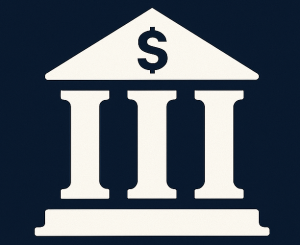DeFi 2.0: Can It Fix Finance’s Messy Supply Chain?
What Even *Is* DeFi 2.0? And Why Should I Care?
Okay, so DeFi 1.0… remember that? It felt like yesterday we were all throwing money at anything with the word “yield” in it. High returns, decentralized everything… seemed too good to be true, right? Well, surprise, surprise, it often was. Impermanent loss, crazy gas fees on Ethereum, and rug pulls galore. Ugh, what a mess! So, the question is, can DeFi 2.0 be the solution?
Honestly, I was skeptical at first. Another “revolutionary” tech promising to fix everything? Been there, done that, bought the t-shirt (and then watched the t-shirt’s value plummet). But, the more I read about it, the more I started to see some real potential. DeFi 2.0 is essentially a new iteration aiming to address the shortcomings of its predecessor.
It’s supposed to be more sustainable, more secure, and, importantly, more efficient. One of the big focuses is on improving capital efficiency, something DeFi 1.0 definitely struggled with. Think of it like this: DeFi 1.0 was the Wild West, full of opportunity but also full of danger. DeFi 2.0 is trying to be the sheriff, bringing some order and stability to the town. But can it actually work? That’s the million-dollar question, isn’t it?
The Supply Chain Problem: Where DeFi 2.0 Could Shine
Now, let’s talk about the supply chain. It’s probably not the first thing that comes to mind when you think about DeFi, but honestly, it should be. The current financial supply chain is… clunky. Slow, expensive, and riddled with intermediaries taking their cut. Think about all the paperwork, the delays, the fees involved in just getting goods from point A to point B. It’s insane!
DeFi 2.0 offers a potential alternative, a way to streamline these processes using blockchain technology. Imagine a world where payments are instant, transparent, and secure, without the need for banks or other intermediaries. Smart contracts could automate many of the processes involved in supply chain finance, reducing costs and increasing efficiency.
For example, let’s say a farmer in Vietnam wants to sell rice to a buyer in the US. Right now, that involves a whole chain of banks, letters of credit, and various other intermediaries. With DeFi 2.0, that transaction could potentially be executed directly on a blockchain, with payments being released automatically once certain conditions are met (like proof of shipment, for example). That’s a game changer.
But It’s Not All Sunshine and Rainbows: The Challenges Ahead
Okay, so it all sounds great in theory. But let’s be real, there are still some major hurdles to overcome. Regulation, for one. Governments around the world are still grappling with how to regulate cryptocurrencies and decentralized finance. Until there’s more clarity on the regulatory front, it’s going to be difficult for DeFi 2.0 to gain widespread adoption in the supply chain.
Security is another big concern. DeFi hacks are still a regular occurrence, and the risk of losing funds is a real deterrent for many businesses. We need to see significant improvements in the security of DeFi protocols before companies are going to be comfortable entrusting their supply chain finance to them.
And then there’s the issue of scalability. Can these DeFi platforms actually handle the volume of transactions involved in global supply chains? Many of them are still struggling to keep up with demand, and transaction fees can be prohibitively high. So, it’s going to take some serious technological advancements to make DeFi 2.0 a viable solution for the supply chain.
My Own DeFi Misadventure (Don’t Judge!)
I remember when I first got into DeFi. It was back in early 2021, and I was hearing all this hype about yield farming and staking. I thought, “Hey, I can make some easy money!” I put some ETH into a relatively new protocol that was promising insane APYs. Seemed legit at the time, you know? I mean, all the cool kids were doing it, right?
Long story short, it was a complete disaster. The project turned out to be basically an unaudited playground, the smart contract had a critical vulnerability, and I lost a good chunk of my initial investment. I’d stayed up until 3 a.m. trying to understand the whitepaper… for what? Was I the only one confused by this? Lesson learned: do your research, and don’t put all your eggs in one basket (especially when that basket is made of code that you don’t fully understand). It definitely made me more cautious about DeFi 2.0.
DeFi 2.0 and the Future of Finance: A Cautious Optimism
So, where does all this leave us? Well, I’m cautiously optimistic about the potential of DeFi 2.0 to revolutionize the financial supply chain. It’s not going to happen overnight, and there are definitely some significant challenges to overcome. But, the underlying technology is promising, and the potential benefits are huge.
Imagine a world where small businesses have access to affordable financing, where payments are instant and transparent, and where the entire supply chain is more efficient and resilient. That’s the promise of DeFi 2.0. It might take a few years, or even decades, to fully realize that vision, but I think we’re on the right track.
And, hey, even if it doesn’t completely revolutionize the supply chain, it could still make a significant impact in certain niche areas. For example, it could be used to improve the efficiency of cross-border payments or to provide financing to small farmers in developing countries.
Is DeFi 2.0 Worth the Hype? A Few Final Thoughts.
Ultimately, the success of DeFi 2.0 will depend on a number of factors, including regulatory clarity, technological advancements, and, perhaps most importantly, the willingness of businesses to adopt these new technologies. It’s a wait-and-see game, but I’m definitely keeping a close eye on it.
If you’re as curious as I was, you might want to dig into the concept of stablecoins and how they interplay with DeFi protocols. Understanding stablecoins is almost essential for navigating the DeFi space. Also, look into different layer-2 scaling solutions for Ethereum; they might be critical to making DeFi more accessible.
The funny thing is, the more I learn about this stuff, the more I realize how much I *don’t* know. But, that’s part of what makes it so exciting, right? Who even knows what’s next? Maybe DeFi 3.0 will be the one that finally cracks the code. Or maybe something completely different will come along and disrupt the entire financial system. Only time will tell. But I’m here for the ride, that’s for sure. Just, uh, maybe I’ll be a little more careful with my money this time around. No promises, though.












